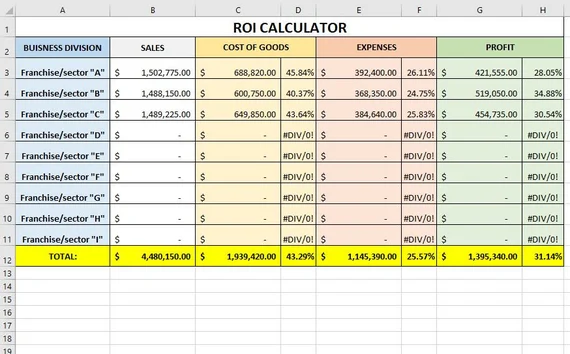
Writing a طرح توجیهی (business plan or feasibility study) is a crucial step in planning any successful project, whether for a startup, expansion, or investment opportunity. This document outlines the strategic, operational, and financial aspects of a business idea, aiming to convince investors, stakeholders, or governmental bodies of its viability. However, many entrepreneurs and business professionals make avoidable mistakes during the drafting process. These errors can reduce the credibility of the طرح توجیهی and limit the chances of securing funding or approval. In this article, we’ll explore the most common mistakes and how to avoid them to ensure your طرح توجیهی is clear, professional, and compelling.
Understanding the Importance of a طرح توجیهی
A well-prepared طرح توجیهی helps potential investors and decision-makers understand the scope and profitability of a business idea. It includes detailed information about the market analysis, target audience, technical requirements, financial forecasts, and potential risks. When done right, it can be the foundation of a successful business launch. But when filled with errors, it may cause confusion, doubts, or outright rejection.
Common Mistakes in طرح توجیهی and How to Avoid Them
1. Lack of Clear Objectives
One of the first mistakes in writing a طرح توجیهی is failing to define clear and measurable goals. Without specific objectives, your readers won’t understand the purpose of the project or how success will be evaluated.
How to avoid it:
Begin with a concise statement of the project’s goals. Use SMART criteria (Specific, Measurable, Achievable, Relevant, Time-bound) to guide your planning. This helps align every section of the طرح توجیهی with the intended outcomes.
2. Inadequate Market Research
Another major flaw is underestimating the importance of market research. Some writers rely on assumptions instead of real data, leading to unrealistic projections and strategies.
How to avoid it:
Include data from credible sources, such as industry reports, government databases, or independent market research firms. Show a clear understanding of your competitors, customer demographics, and market trends. This demonstrates that your طرح توجیهی is grounded in reality.
3. Overly Optimistic Financial Forecasts
Financial projections are often the deciding factor for investors. Many طرح توجیهی submissions include exaggerated revenue expectations or ignore possible expenses.
How to avoid it:
Use conservative estimates and explain the assumptions behind your numbers. Include detailed profit and loss statements, cash flow projections, and break-even analysis. This transparency builds trust and shows that you’ve considered the financial risks.
4. Ignoring Potential Risks
Every project faces risks, yet many writers avoid addressing them, fearing it will weaken their case. This can have the opposite effect, making the plan seem naive or incomplete.
How to avoid it:
Dedicate a section of your طرح توجیهی to risk assessment. Identify potential challenges (economic, operational, legal, etc.) and describe your strategies for mitigating them. This shows foresight and preparedness.
5. Weak Executive Summary
The executive summary is the first thing investors read, but many treat it as an afterthought. A vague or poorly written summary can lead to immediate disinterest.
How to avoid it:
Write the executive summary last, but place it at the beginning. It should highlight the key elements of your طرح توجیهی—objectives, market opportunity, financial potential, and competitive advantages—clearly and concisely.
6. Poor Structure and Formatting
Disorganized or cluttered documents make it hard for readers to follow your plan. Lack of headings, subheadings, and logical flow can reflect poorly on the professionalism of your proposal.
How to avoid it:
Organize your طرح توجیهی using clear headings such as Introduction, Market Analysis, Technical Feasibility, Financial Plan, Risk Assessment, and Conclusion. Maintain consistency in formatting and use bullet points or charts where appropriate to enhance readability.
7. Ignoring Legal and Regulatory Requirements
Some طرح توجیهی submissions completely overlook the legal context of the project. This can result in serious complications, especially for projects in regulated industries like healthcare, manufacturing, or energy.
How to avoid it:
Research the necessary licenses, permits, and compliance measures required in your field. Include a legal section in your طرح توجیهی that outlines how you will meet these requirements. This reduces future roadblocks and increases confidence in your plan.
8. Using Generic Language
Using vague or generic language dilutes the message and fails to impress decision-makers. Words like “best,” “great potential,” or “huge market” without evidence are meaningless.
How to avoid it:
Be specific. Instead of saying “huge market,” state “a $500 million market with 7% annual growth.” Replace buzzwords with factual information, clear data, and tangible benefits.
9. Not Customizing for the Audience
Sending the same طرح توجیهی to different audiences—investors, banks, or government agencies—can backfire. Each stakeholder has different priorities and evaluation criteria.
How to avoid it:
Tailor your document to your audience. For example, banks will focus on repayment capacity and cash flow, while investors may prioritize ROI and scalability. Adjust your emphasis and language accordingly.
10. Neglecting the Technical Feasibility
Many business plans fail to detail the technical processes, equipment, or systems needed for operations. This leaves gaps in the reader’s understanding of how the business will function day-to-day.
How to avoid it:
Include a technical section in your طرح توجیهی, explaining production methods, technology requirements, supplier details, and logistical plans. This is especially important in manufacturing, agriculture, or tech-related projects.
Tips for Writing an Effective طرح توجیهی
- Start with an outline: Draft a structure before writing. It will help organize your thoughts and ensure you cover all important sections.
- Use simple and professional language: Avoid jargon unless your readers are technical experts. Clear language improves understanding.
- Include visuals: Use charts, tables, and infographics to support your data. Visuals are easier to process than text-heavy paragraphs.
- Proofread and edit: Spelling mistakes and grammatical errors can damage your credibility. Always revise before submission.
- Seek expert feedback: Before finalizing your طرح توجیهی, have it reviewed by business consultants, financial analysts, or industry experts.
Final Thoughts
A professional and well-prepared طرح توجیهی can be the key to launching a successful business or securing vital funding. Avoiding the common mistakes listed above will improve the clarity, impact, and credibility of your document. Remember, your طرح توجیهی is not just a formality—it’s a strategic tool that represents your vision, planning skills, and readiness to execute your project. By giving it the attention and precision it deserves, you significantly increase your chances of success.





